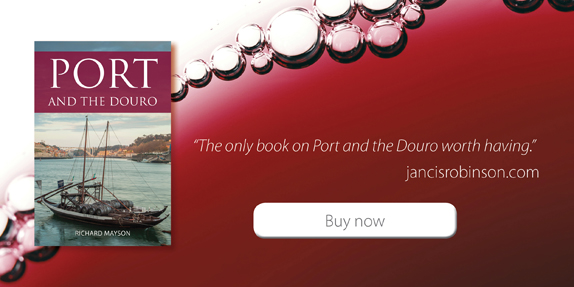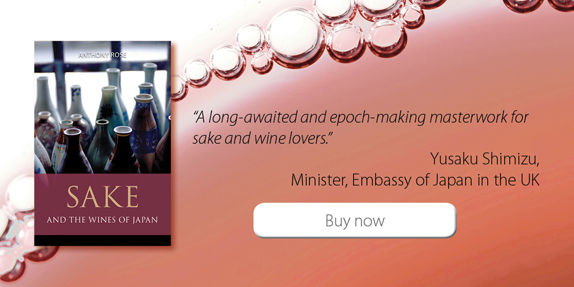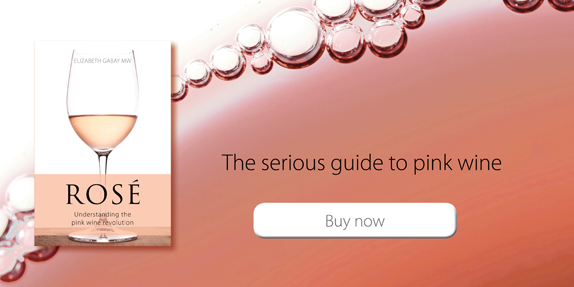Wine and spirits
Book ideas for the wine lover in your life
6 December 2018 by Rebecca in Classic Wine Library, Wine and spirits
As we flip our calendars over to December it’s time to admit that, yes, the festive season is upon us. If you’re anything like the Classic Wine Librarians there will come a point when, exhausted from shopping and socialising, you yearn for some peace and quiet, a comfortable chair, a glass of wine and a good book to curl up with. May we suggest that our wine books are perfect for the Christmas-weary oenophile, and for the rest of December they are available with a 25% discount. Just visit our online bookshop, choose your books and enter the code Crackle18 at checkout to claim your discount. Read on for our top book picks.

Some of our best buys for long winter evenings
Check out our latest titles, critically acclaimed books and bestsellers. They make great presents – for your loved ones or for yourself.
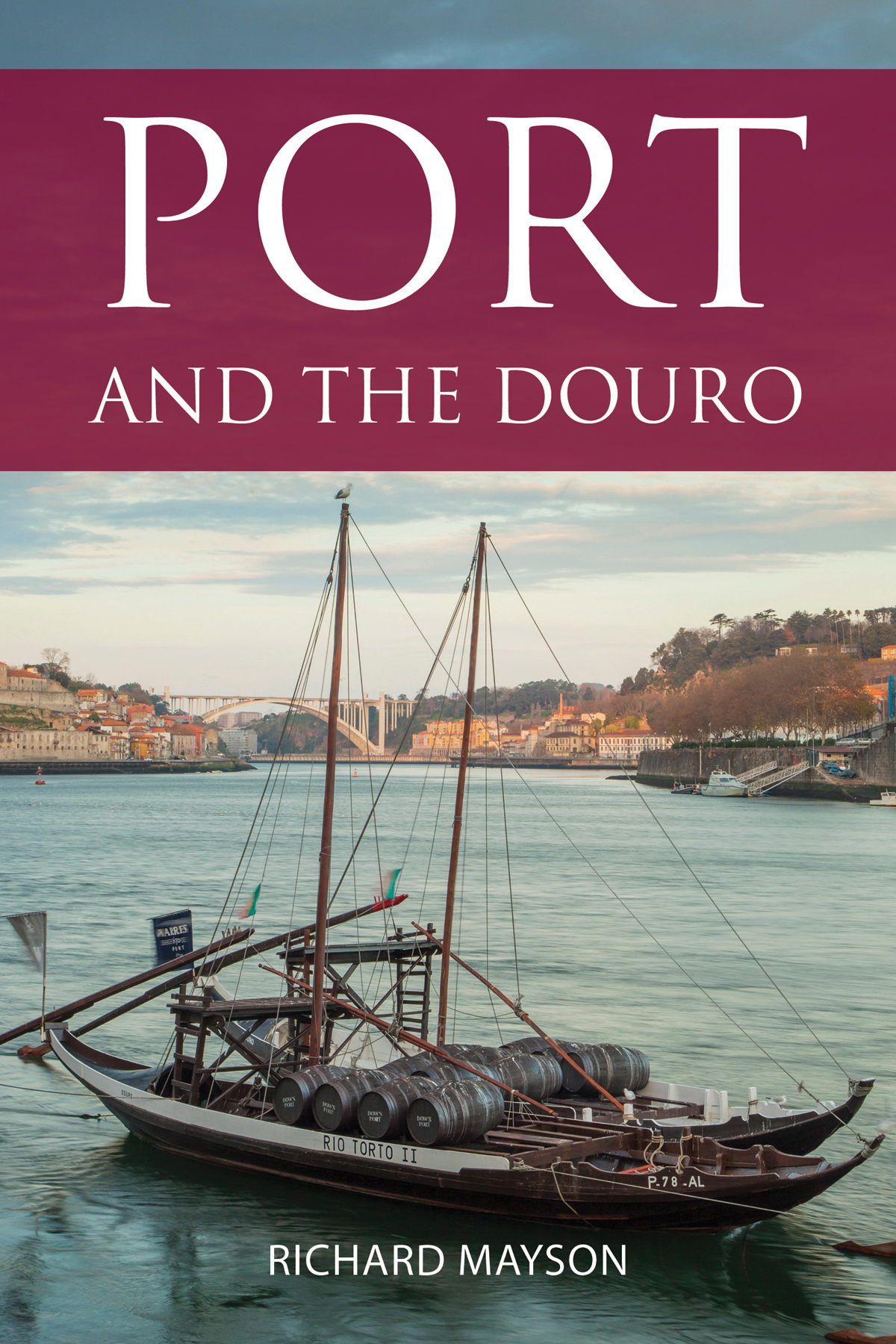 Port and the Douro (fourth edition) – NEW RELEASE
Port and the Douro (fourth edition) – NEW RELEASE
Richard Mayson’s classic book on Port and Douro wines is consistently popular, particularly at this time of year. In the comprehensively updated new edition, published last month, he reminds us why Port is a drink that continues to fascinate wine-lovers and win new fans. The chapter on vintage port covers harvests as recent as 2017 and provides information on vintages going back to 1844. Peppered throughout with anecdotes, potted biographies of those who shaped the industry and insights into quirks of the trade, this extensive and engaging guide to Port is an essential book for any wine enthusiast’s library.
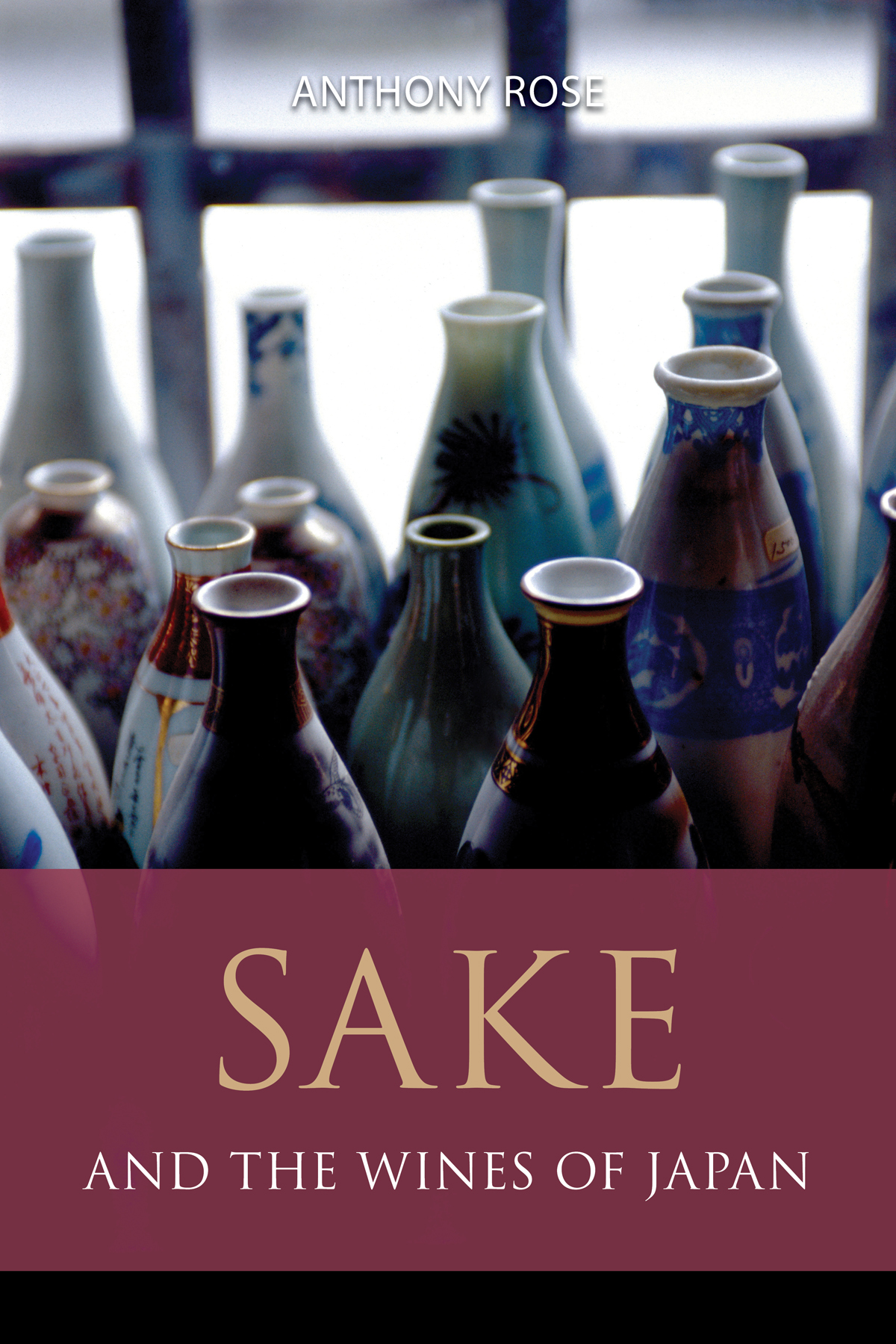 Sake and the wines of Japan – NEW RELEASE
Sake and the wines of Japan – NEW RELEASE
Sake is well on its way to becoming the next big thing. Here, Anthony Rose takes us through the history of sake production, from offerings to the gods made from rice chewed by priestesses, to the heyday of sake, when master craftsmen – tojis – were instrumental in a brewery’s success or failure, to sake’s fashionable new wave. He details sake types, explains the ingredients and brewing methods, demystifies polishing ratios, explores the issues around ageing sake and discusses how best to enjoy the drink. A personal selection of sake producers are profiled. Also features a chapter on Japanese wine.
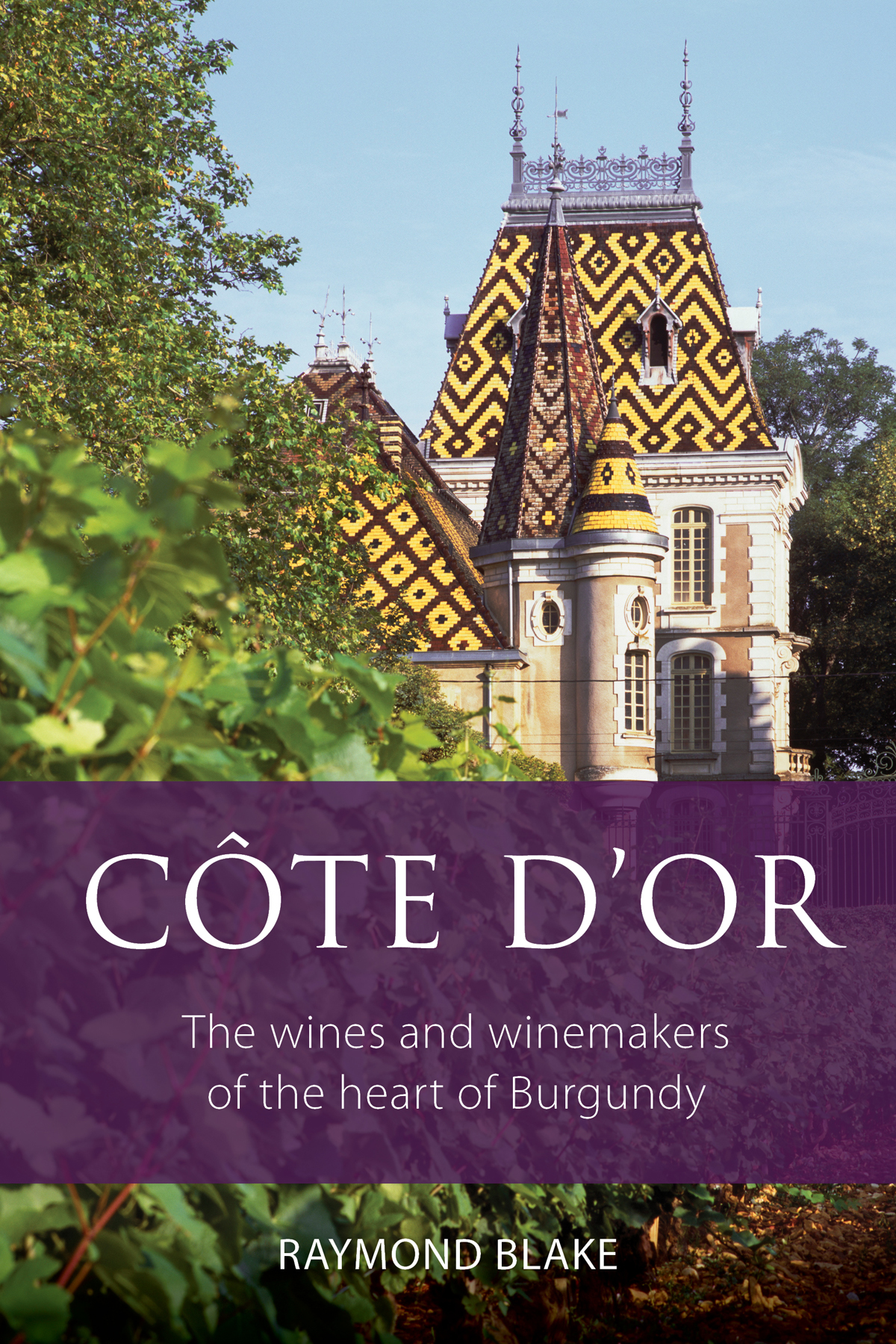 Côte d’Or: The wines and winemakers of the heart of Burgundy
Côte d’Or: The wines and winemakers of the heart of Burgundy
Raymond Blake’s thoroughly enjoyable account of the prestigious and fascinating Côte d’Or was shortlisted for the Domaine Faively Wine Book of the Year at the Louis Roederer International Wine Writers’ Awards earlier this year. Amongst the compliments received for this fresh take on one of the world’s most influential wine regions was this one from the Irish Times: “Needless to say, it would make the perfect Christmas gift for the wine lover in your life.” Whether that wine lover is you or a friend, you can get hold of a copy here.
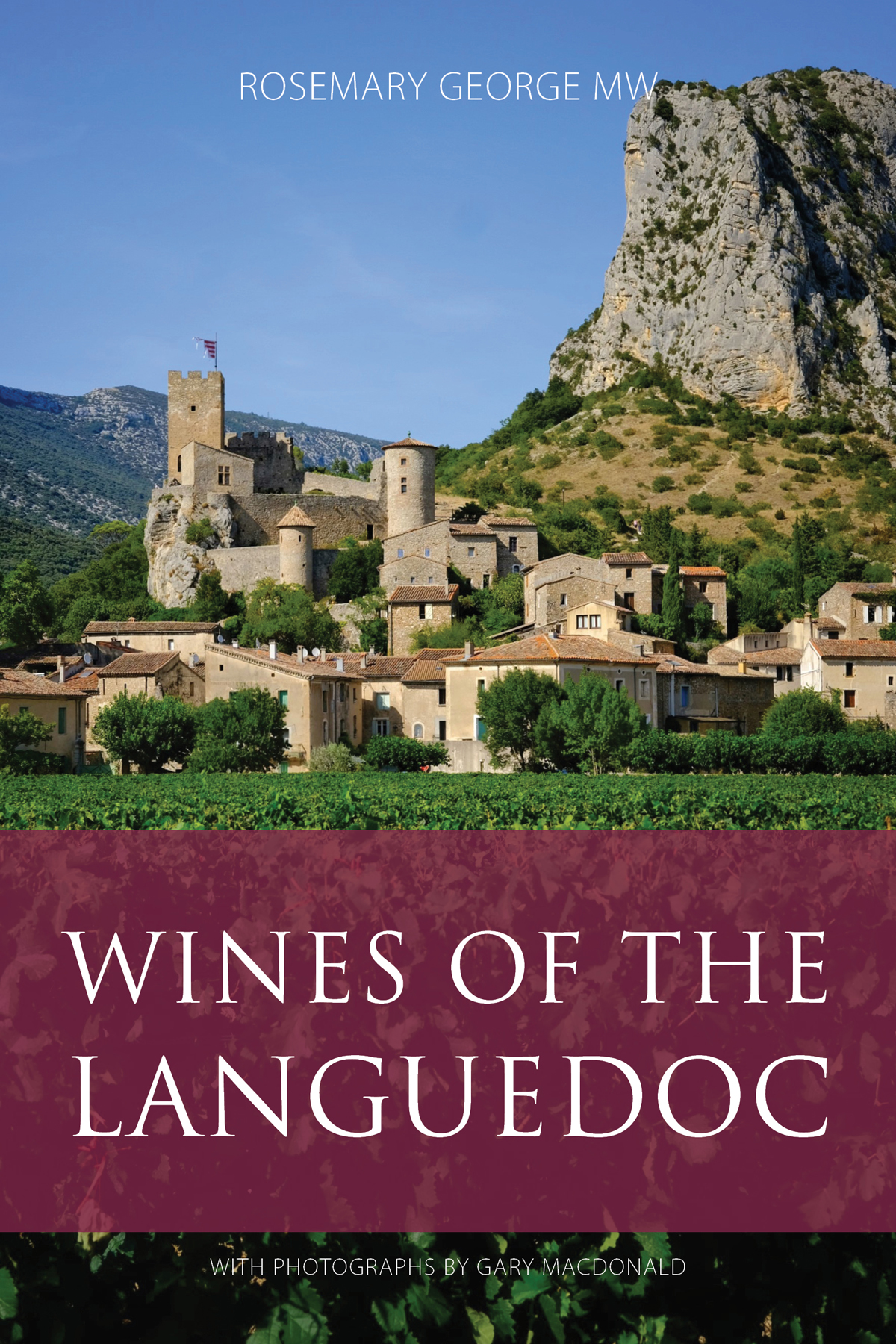 Wines of the Languedoc
Wines of the Languedoc
Jancisrobinson.com called it, “the most important book written on the Languedoc so far”. While it is easily the most informative book on this newly great region Wines of the Languedoc is also immensely readable. Rosemary George MW’s knowledgeable account provides the historical and geographical background you would expect from a Classic Wine Library title but the book’s main focus is on the most interesting producers currently working in this southern French region, with George bringing a personal touch to the profiles which lets readers live through the triumphs and tragedies of winemaking in this exciting and challenging land.
• Using the code Crackle18 at checkout entitles you to 25% off all titles within the Classic Wine Library during December. Second class postage is free within the UK, postage rates to the rest of the world vary; see delivery rates here
• If you are ordering for a UK address we recommend placing orders before 14 December 2018 to guarantee delivery in time for Christmas.
• If you are ordering for deliveries outside of the UK and need books in time for Christmas please contact us at the email address below before placing your order.
• The Classic Wine Library closes at 5pm on Friday 21 December and reopens at 9am on Wednesday 2 January. The online store remains open; orders placed between these dates will be processed on 2 January.
• Please email marketing@infideas.com if you have any queries about your order or our delivery terms.
Comprehensive update for seasonal best-seller
26 November 2018 by Rebecca in Classic Wine Library, Wine and spirits
Port is a perennial favourite of the festive season, so appropriately this month sees a timely update of Richard Mayson’s classic, award-winning book on the subject. In the nearly 20 years since the first edition of Port and the Douro was published there have been changes in the vineyard, with growers having to adapt to altered seasons, in the cellar, as new technology becomes ever more sophisticated, and in the way the Port industry itself is organized. Yet Port continues to produce classic vintages and to fascinate wine-lovers worldwide.
In his preface to the book Mayson states that one of his major objectives is to ensure that the book is a ‘good read’. This he achieves admirably, particularly through his peppering of the text with boxes offering profiles of key figures in the development of the Port industry and interesting asides on details such as the origins of passing the Port, the decline in popularity of Port and lemon in The Rovers Return and the rumour that Lord Nelson sketched out his plans for the Battle of Trafalgar using a finger dipped in Port.
All the essential information for student, sommelier and Port fan alike is here, delivered in a lucid and unpretentious style. To begin with, Mayson provides a history of Port, from the beginnings of viticulture in Roman times to the present day. The vineyards and their vines as well as the quintas where they are cultivated are thoroughly explored, followed by an explanation of Port production, both traditional and modern. A short introduction to Port types prepares the reader for a detailed assessment of vintages from 1960–2017. Some of these wines have been tasted afresh for this edition, and notable vintages (both exceptional and poor) dating back as far as 1844 are also included. The structure of the Port trade remains in flux, with the chapter on the shippers reflecting this as Mayson explains recent changes in fortune and ownership. Douro wine, which pre-dates its fortified cousin and has seen its revival accelerate over the last 20 years, receives an entire chapter to itself. Finally, for those wishing to visit the region, there are some ideas on what to do and where to stay.
Port and the Douro takes an honest and critical view of the region’s twin wine industries. In a postscript assessing the future for Port and Douro wines Mayson notes the potential problems of increased tourism, the challenges of competitive pricing and the pros and cons of an industry where most sales are in the hands of just five large companies. He ends on an optimistic note, stating that, “I am convinced that the Douro will continue to be one of the world’s most captivating wine regions and that Port will remain among the greatest of wines.”
About the author
Richard Mayson entered the UK wine trade in 1984 and spent five years working for the Wine Society. His first book, the award-winning Portugal’s Wines and Wine-Makers, was published in 1992. Port and the Douro, published in 1999, was shortlisted for the André Simon Award and the second edition, published in 2004, won the Symington Award of Excellence. In 2003 The Wines and Vineyards of Portugal won the André Simon Award for Drinks Book of the Year. In 2014 Richard was Louis Roederer International Wine Feature Writer of the Year and in 2015 Madeira: The islands and their wines was shortlisted for the André Simon Award. Richard chairs the Port and Madeira panel for the Decanter World Wine Awards and lectures to students at Leith’s School of Food and Wine in London. In 1999 he became a Cavaleiro of the Confraria do Vinho do Porto.
Port and the Douro is published on 26 November 2018. Review copies are available from marketing@infideas.com
Why we believe in experts
23 November 2018 by Rebecca in Book publishing, Classic Wine Library, Wine and spirits
Here at the Classic Wine Library we value expertise, which is why we recruited three highly knowledgeable wine experts to form our editorial board. Sarah Jane Evans MW, Richard Mayson and James Tidwell MS have all worked in various capacities in the wine industry. They understand it not just as writers and wine critics but also from the perspective of winemakers (Richard Mayson owned a vineyard in the Alto Alentejo for 15 years), sommeliers (James Tidwell co-founded TEXSOM, the US’s premiere professional beverage education event) and consumers (for ten years Sarah Jane Evans was Associate Editor of BBC Good Food magazine, where she encouraged the wider public to explore new tastes).
The three board members are well-known and well-connected within the wine world, and between them have an enviable collection of contacts, meaning they are able to introduce the best people writing about wine today to the series. Knowledgeable in their own particular subject areas they recognize expertise in others, even if the region under discussion is not one in which they are well versed. As published writers their input on content and structure is invaluable. If need be they are also there to offer advice and support to writers and act as a bridge between author and publisher (though it should be noted that the editorial team at Infinite Ideas is entirely approachable). All this goes to create books that are, as one reviewer recently remarked, consistently ‘well-structured, well-edited and rigorously researched’. But don’t worry that these books are dry collections of facts and figures, they are also immensely readable ‘fireside reads’ and ‘essential travelling companions’.
There are now 19 books in the series, with plenty more lined up for the future. If you’ve yet to experience the Classic Wine Library why not pick up one of them today and become just a little bit more expert yourself?
We love knowledgeable people so much that we want the next generation of wine experts to have the best information available to them, which is why we offer discounts on all our books to those studying for MW, WSET and GuildSomm qualifications. To find out more ask your course provider about member offers.

After small-batch gins and craft beers here’s the next big thing: sake
22 October 2018 by Rebecca in Classic Wine Library, Wine and spirits
Sake is about to hit the big time as it becomes the latest drink adopted by today’s trendsetting urbanites. After years spent languishing in the doldrums, sake’s popularity has grown to such an extent over the last decade that UK wine specialist Majestic recently added three premium sakes to its range, and it is even being produced outside of Japan. Anybody in doubt as to the drink’s hipster credentials need only note the location of some of those breweries – Peckham, London; Portland, Oregon and of course Brooklyn.
But sake has much more to offer than the promise of making its drinker seem in vogue, as Anthony Rose demonstrates in a new book, Sake and the wines of Japan. The craftsmanship involved in the drink (with often obsessive regard to rice polishing ratios), its simple ingredients and the years of tradition captured in each glass make it easy to see how it would appeal to those previously infatuated with gin’s botanicals or the mix of hops in their IPA. But its artisan credentials and complexity also make it a challenging and rewarding drink for all involved in a serious pursuit of new and intriguing flavours.
As Rose notes, sake is a drink ideally suited to being tasted with food. Indeed after years of attempting to unravel sake’s mysterious appeal during wine-style tastings he finally got to grips with it during a relaxed meal: “Someone ordered sake and as I was drinking it with the hotpot, all of a sudden, I found myself enjoying it … At a moment in time when I’d stopped thinking about it from a tasting perspective, I found myself lapping it up.”
It is not really possible to fully appreciate sake without examining the culture, history and landscape of its country of origin. As Rose points out: “Sake is both a drink and a window onto Japanese society. To delve into sake is to time-travel through centuries of ambition, grit in times of hardship, and outstanding imagination and achievement.” One might argue that when sake sales began to decline it was because, during the shortages that followed the Second World War, brewers found it necessary to do the best they could with limited resources (cut corners, if you will), simultaneously losing sight of the centuries of craftsmanship that had made sake Japan’s national drink. But the new generation of brewers, many of whom can claim family links to sake-production dating back to the drink’s heyday in the Edo Period, teams old-style production purity with a modern outlook, opening the drink up to the world.
Sake and the wines of Japan covers all essential aspects of sake for the newcomer, including the four simple ingredients – rice, kōji, water and yeast – the sake-making process, sake classification and sake tasting. Rose includes a personal selection of sake brewers as well as an interesting chapter spotlighting sake’s new wave. An essential tool for all those seeking a way into this enigmatic and enticing culture, it also includes a chapter on Japan’s small, young wine industry and its best exponents, and a guide to Japan for those visiting the country.
Anthony Rose is an award-winning wine and sake critic who contributes to publications that include Decanter, The World of Fine Wine, Financial Times How to Spend It online and The Oxford Companion to Wine. He is co-chair of the Australia panel at the Decanter World Wine Awards and the Sake International Challenge in Tokyo and teaches a sake consumer course at Sake No Hana in London. A founding member of The Wine Gang (www.thewinegang.com), he was the wine correspondent of the print version of the Independent from start to finish (1986–2016).
Sake and the wines of Japan is published on 29 October 2018. Review copies are available from marketing@infideas.com
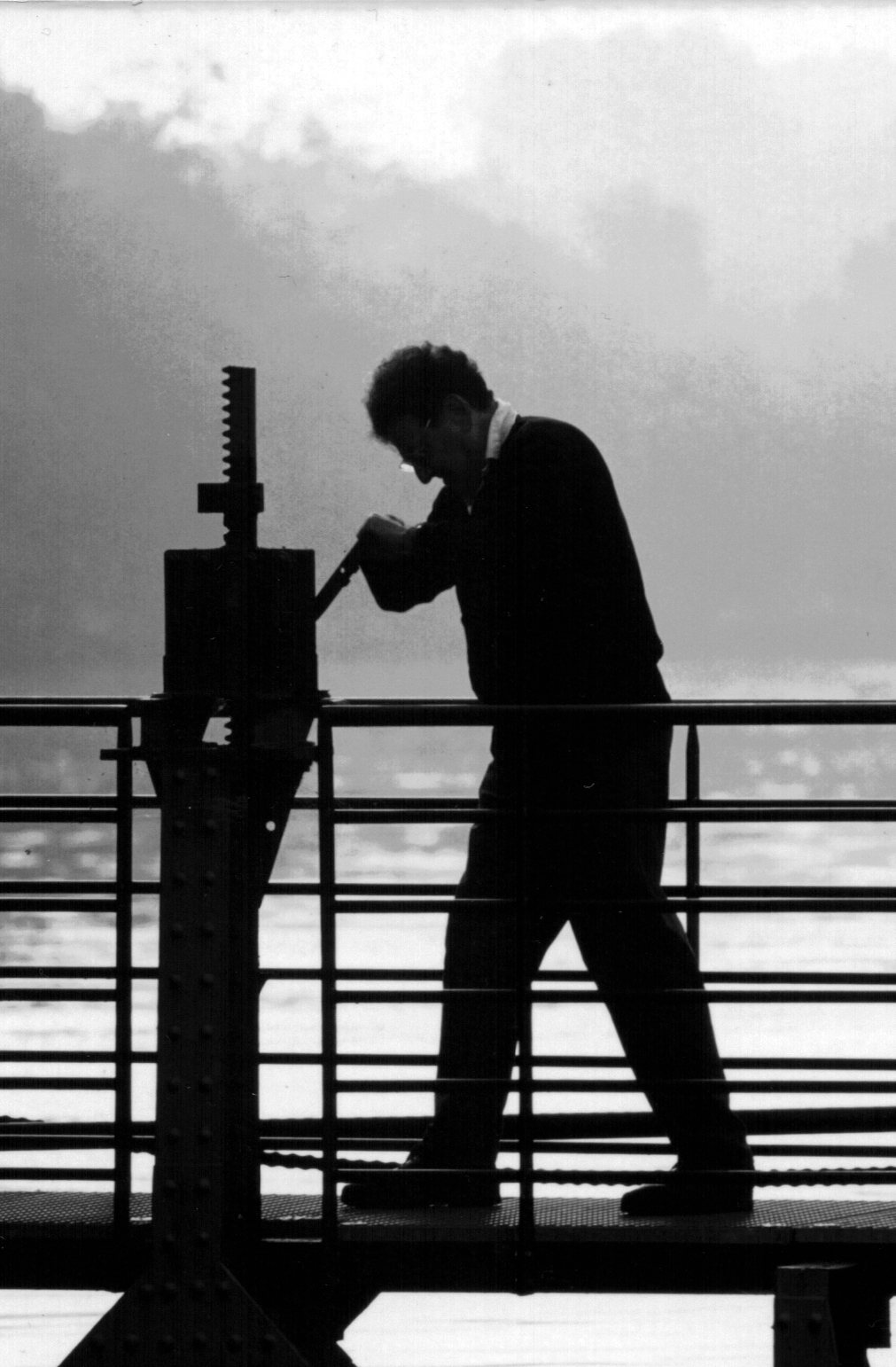
Nick Faith remembered, by Anthony Rose
18 October 2018 by Rebecca in Classic Wine Library, Wine and spirits
Affectionate memories and thoughtful assessments of Nick Faith’s life have been duly posted in a host of obituaries paying tribute to the qualities that made Nick such a great journalist and author, and to his legendarily sociable, gossip-laden, complex personality. So here I’d like to confine myself to a few reminiscences of my own.
I first came across Nick by way of the articles he wrote for the wine trade magazine, Wine & Spirit. Not yet a wine journalist, I found them so inspiring that it dawned on me that writing about wine could be a worthwhile endeavour. It was only a little later, after I joined the Independent as its wine correspondent, that I came to know Nick, who wrote for the paper as a freelance financial journalist, in person. Did he have a hand in my appointment? I don’t think I’ll ever know but it wouldn’t surprise me, because he had the ear of its editor, Andreas Whittam Smith, and the freshly-minted Independent was looking to blood a newbie to wine writing.
As soon as you met Nick, it was clear that his mischievous demeanour spelt trouble for the establishment. He liked nothing better than to dig, poke and provoke. Famously, or should that be notoriously, he wrote a piece in Decanter entitled ‘On the Vileness of Vintage Port’. It did not go down too well in the Douro Valley and Michael Symington of Dow’s, Graham’s and Warre’s fame was clearly enraged. Despite the provocative title, it was in reality basically a rant on how vintage port with its fiery spirit was so often drunk too young.
Nick’s brilliant book The Winemasters was published in 1978, and re-published in 2004 titled The Winemasters of Bordeaux. The Winemasters is arguably the best wine book ever written – a worthy winner of the André Simon Award. Investigating a story was Nick’s forte, but the results of his researches were always communicated in a prose style that was vivid, accessible and witty. Opening with a chapter entitled Hollywood-sur-Gironde, the story of the tensions between the aristocratic Médoc château owners and the Chartronnais merchants unfolds as a political, economic and social drama culminating in the Cruse scandal, aka Winegate, that reads like a crime thriller. It deserves a film.
The Winemasters apart, of the many books that Nick wrote (more than 20, covering, inter alia, railways, the rotary engine and plane, train and car accidents), the two for which I remember him most are Cognac and The Story of Champagne. They dealt not just with the nuts and bolts of brandy and fizz and how they were made but the more far-ranging stories of the unsung heroes, the impetus behind developments in style and the successful battles fought against competitors. Typically, in The Story of Champagne he thanked his editor in his acknowledgments for making sure that it was ‘accessible to anyone interested in the subject and not restricted to the army of champagne-bores’.
When Nick travelled, it was as often as not to his favourite regions of Cognac, Bordeaux and Champagne. In Bordeaux during en primeur, he was to be found slumming it in some Médoc or Graves château or another, enjoying nothing more than hobnobbing with the French owners he describes in the preface to the revised edition of The Winemasters as ‘eccentric enough to justify the gossip that makes Bordeaux, like every other society, go round’. So it was a little off-message for him to have joined a small trip to Georgia we were both invited on back in 2001. It could have had something to do with the fact that his muse, Sophia Gilliatt, former Vinopolis director of wine development, had organised the trip, and where Sophia went, Nick followed.
Every moment was memorable but in particular the celebration of Nick’s sixty-eighth birthday in a distillery outside Tbilisi. Becoming steadily merrier as the evening wore on, we were eventually driven back to the capital with Nick doing his best to help Sophia ward off the attentions of a drunken, lovelorn distillery manager. As it became increasingly difficult, Nick resorted to a ruse. On the outskirts of the city, he got the driver to stop and we all piled out into a crowded local pub, ostensibly for a drink, but in fact managing to make a swift escape through another door. The distillery manager cottoned on too late and we abandoned him shaking his fist in frustrated pursuit of our Transit van.
Last time I saw Nick was at the tasting in London organised by Champagne Deutz almost exactly a year ago. He was on typically fine form, but much frailer than I remembered, and, for the first time, he was showing his age. Nick Faith was my journalistic mentor. I shall miss him, his sharp wit, the gossip of course, and the unique contribution that he brought to wine writing.
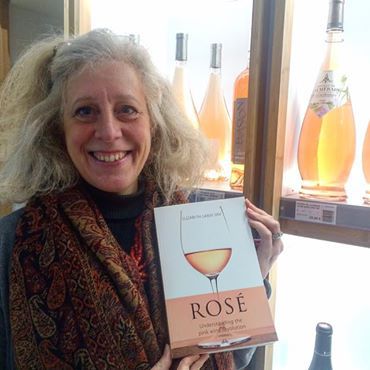
Coming up rosés – an interview with Elizabeth Gabay MW
12 October 2018 by Rebecca in Classic Wine Library, Wine and spirits
Elizabeth Gabay has been in the wine trade since 1986. She has written about and lectured on rosé wines extensively, and has judged at Decanter’s annual World Wine Awards as well as at many other competitions, including the Mondial de Rosé, the Guide de Vins de Provence and for magazine panel tastings for Decanter and Drinks Business. Elizabeth Gabay’s first book, Rosé: Understanding the pink wine revolution, part of The Classic Wine Library, was published in January 2018.
You’ve been in the wine trade for more than thirty years and became an MW in 1998 but can you remember your first experience of wine and do you think it had any influence on your choice of career?
I grew up in a family who were very continental in their approach to food and drink. Even though my parents were not great connoisseurs of fine wine, they collected wine on all of our holidays round France and I was encouraged to try, and taste. My earliest memory, to my shame, was visiting Henri Maire in the Jura. My parents loved his vin jaune – I was horrified when they bought a case, and tried to dissuade them! But others seemed to recognize my interest in wine way before me. My first wine books were given as presents when I was 16, and the university careers officer suggested I might like working in restaurants or hotels. When I travelled I did visit vineyards – but never thought of it as a potential job.
Is there a difference between wine tasting and wine enjoyment – do you ever find Elizabeth the wine taster spoiling the simple pleasure of a glass of wine?
I actually think wine tasting helps the enjoyment. Just drinking a wine fast, you may miss the moment of enjoyment. It reminds me of the film Tampopo, when the master says that one should first stop, admire the food on the plate, appreciate its look and aromas, then taste. If you just want the alcohol, just drinking is fine. But I love the moment when you mentally stop and just taste. Even with an ordinary wine. A bottle captures a past summer, a place, the work of a winemaker. It is a bit like meditation.
You’ve become a bit of an evangelist for pink wines over the last few years. Have you noticed it becoming any easier to convince people of rosé’s virtues?
Sort of … If I say I have just written a book on rosé and I live in Provence, I think the first reaction is oh yes – another PR book with lots of photos of lavender and the sea. When people see the book – the size and extent of the subject – I get their attention. If I can present in a tasting some really interesting rosés – they are converted. What I have really enjoyed is connecting up with the winemakers who are making exciting rosés and working to promote these wines.
Would you say there is a genuine revolution in the world of wine towards a more serious appreciation of rosé or is its increased popularity merely a passing fashion?
Not sure. I think it may mean the style will split. The high-volume commercial style (possibly with a bit of residual sugar) will continue to be sold alongside reds and whites in bars and chain restaurants. The fashionable, trendy wine – with maybe a designer bottle – I think might fade away as the next fashionable item takes its place. But I think the demise of the fashion statement will be good for the style as a whole as high-quality rosés are then free to emerge without being tainted by the image. Maybe taint is too strong a word – but being a fashionable drink does scare serious drinkers away.
I recently went out for a meal with a friend who’s a bit of a wine buff. He suggested we get a bottle of rosé but when, having read your book and being intrigued, I asked if he’d consider getting the Tavel he was quite adamant that we had to have the pale Provence rosé. Have you had any better luck convincing people that pale is not the only pink worth drinking?
Only if I can get them to taste the wine, and even better if they can taste the wine in a black glass. But they also have to be receptive to a rosé having a range of tastes. Some people cannot handle a complex rosé – it scares them, disorientates them.
On that occasion the owner of the restaurant actually persuaded us into drinking a Lebanese rosé (to go with our Lebanese food). As I recall it was pretty good. Where have you encountered the best rosé – perhaps unexpectedly?
Great sommelier. Best? Difficult to say one in particular, and in every region it has been more down to the winemaker than the region as a whole producing good rosé. My biggest surprise was a natural rosé made with Concorde in southern Slovakia. Fantastic wine. The winemaker kept on avoiding my questions about the variety so it went into the book with no variety listed – only later did he admit it was Concorde. Another which has caught my attention is the Negroamaro rosés of Salento in Puglia. The region produces great rosés with the ability to age – I tried a 1976 which was astonishing.
Do you have a favourite rosé that you come back to time and time again (or are you still on a mission to try as many new wines as possible)?
Still looking for new wines – the joy of wine is that there are new wines every year. And I also enjoy exploring older wines and experiencing new techniques.
Rosé is generally perceived as a (perhaps undemanding) summer drink and its popularity tends to wane as the days get cooler. Would you say that was a fair reaction or should we all be downing rosé with our winter casseroles and Christmas dinners?
I haven’t yet decided what we will eat at Christmas – so not yet sure what wine. But it is quite possible that there will be rosé. I’m tempted to suggest a rich Bandol rosé, and a sweeter Cabernet d’Anjou with cheese.
The last year has been a pretty busy one for you, with promotion of your first book on top of all your other work. Do you intend to put your feet up a bit more in 2019 or are there other projects in the pipeline?
Busy is an understatement! It has been non-stop and the new year is looking equally busy. Promoting rosé and the book has been a major part of the work and as I learn more and more I am working on the second edition – it is such a vibrant fast-moving part of the wine world. So masterclasses, tastings, writing, visiting – as I say, it has been non-stop. My next project is on the wines of Provence …


